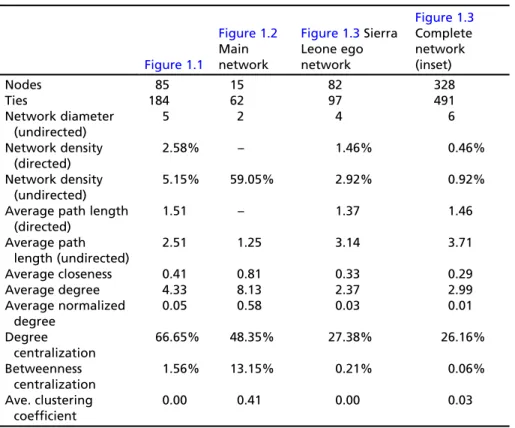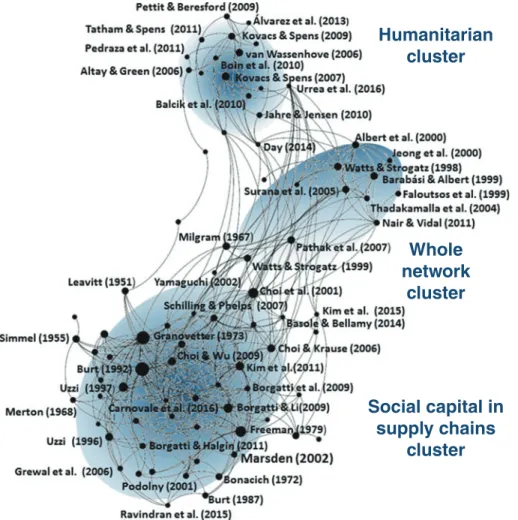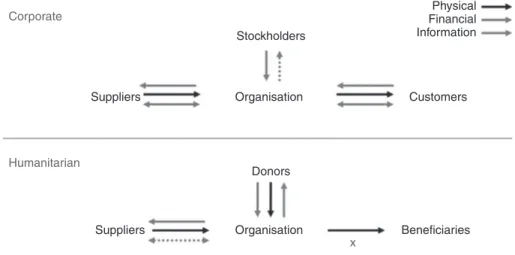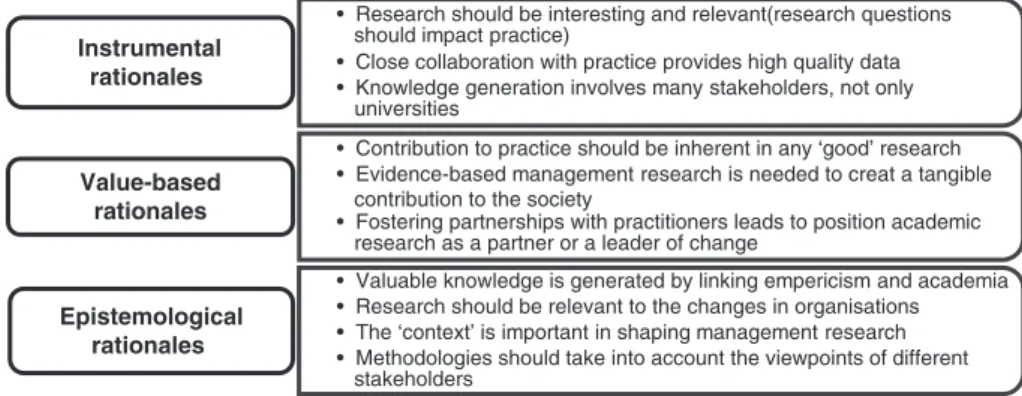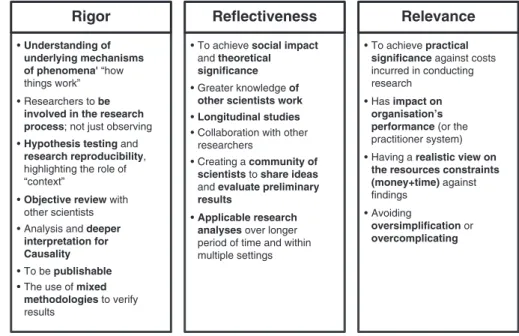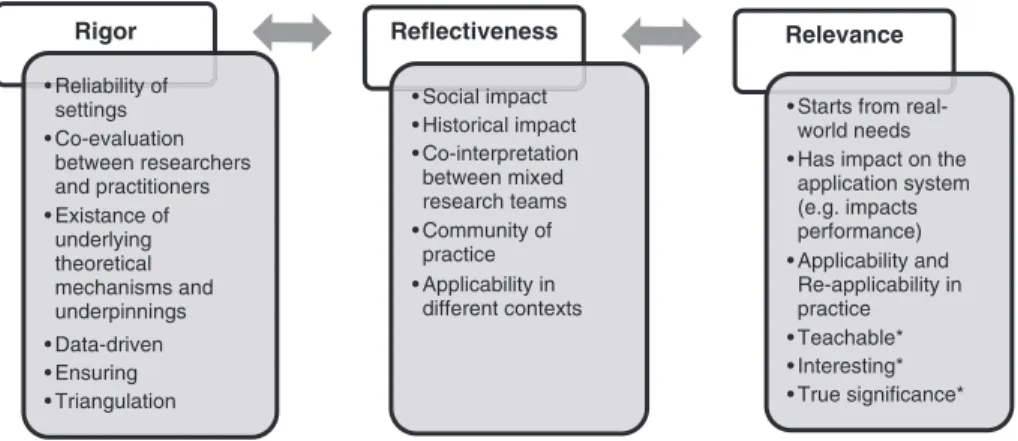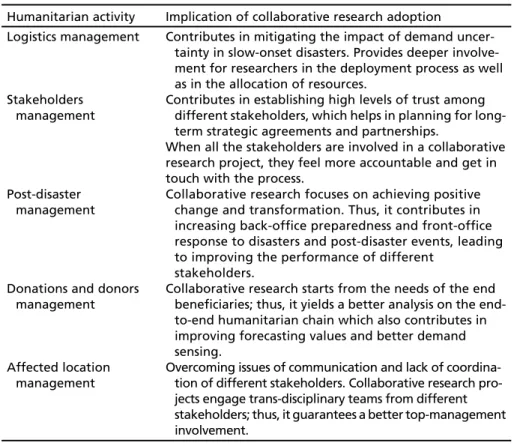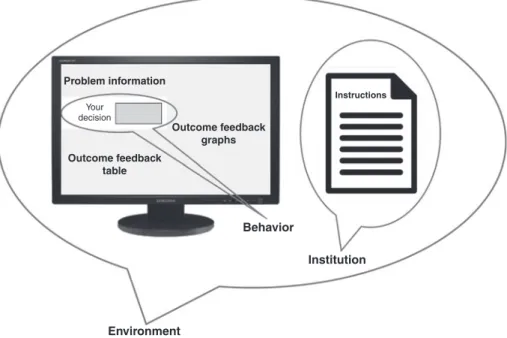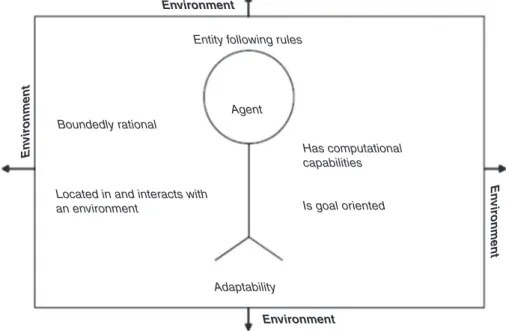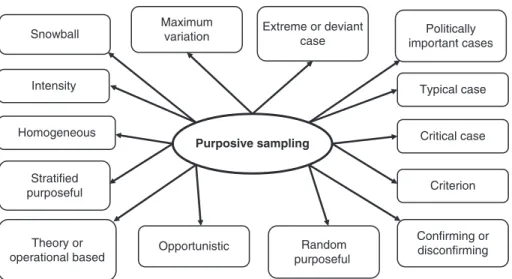Humanitarian Logistics and Supply
Chain Management
Gyöngyi Kovács•Karen Spens•Mohammad Moshtari Editors
The Palgrave Handbook of Humanitarian
Logistics and Supply
Chain Management
Gyöngyi Kovács
Hanken School of Economics Helsinki, Finland
Mohammad Moshtari Hanken School of Economics Helsinki, Finland
Karen Spens
Hanken School of Economics Helsinki, Finland
ISBN 978-1-137-59098-5 ISBN 978-1-137-59099-2 (eBook) https://doi.org/10.1057/978-1-137-59099-2
Library of Congress Control Number: 2017941623
© The Editor(s) (if applicable) and The Author(s) 2018
The author(s) has/have asserted their right(s) to be identified as the author(s) of this work in accordance with the Copyright, Designs and Patents Act 1988.
This work is subject to copyright. All rights are solely and exclusively licensed by the Publisher, whether the whole or part of the material is concerned, specifically the rights of translation, reprinting, reuse of illustrations, recitation, broadcasting, reproduction on microfilms or in any other physical way, and transmission or information storage and retrieval, electronic adaptation, computer software, or by similar or dissimilar methodology now known or hereafter developed.
The use of general descriptive names, registered names, trademarks, service marks, etc. in this publication does not imply, even in the absence of a specific statement, that such names are exempt from the relevant protective laws and regulations and therefore free for general use.
The publisher, the authors and the editors are safe to assume that the advice and information in this book are believed to be true and accurate at the date of publication. Neither the publisher nor the authors or the editors give a warranty, express or implied, with respect to the material contained herein or for any errors or omissions that may have been made. The publisher remains neutral with regard to jurisdictional claims in published maps and institutional affiliations.
Cover illustration: Brain light / Alamy Stock Photo Printed on acid-free paper
This Palgrave Macmillan imprint is published by Springer Nature The registered company is Macmillan Publishers Ltd.
The registered company address is: The Campus, 4 Crinan Street, London, N1 9XW, United Kingdom
Acknowledgements
Handbook Reviewers:
Afshin Mansoori Brunel University
Alain Vaillancourt Jönköping University
Alessandra Cozzolino Sapienza University of Rome
Ali Torabi University of Tehran
Altay Nezih Driehaus College of Business
Amir Masoumi Manhattan College
Andréa Cynthia Santos Duhamel University of Technology of Troyes
Aris Matopoulos Aston University
Arni Halldorsson Chalmers University of Technology Bartel Van de Walle Delft University of Technology Brito Jr Irineu University of São Paulo
Carolien de Blok University of Groningen Cécile L’Hermitte University of Tasmania Charles Mbohwa University of Johannesburg David Grant Hull University Business School
Diego Vega NEOMA Business School
Erica Gralla George Washington University
Gloria Cecilia Urrea Castano University of Lugano
Graham Heaslip Galway Mayo Institute of Technology
Hella Abidi FOM University of Applied Sciences
Hlekiwe Kachali Hanken School of Economics Hossein Baharmand University of Agder
Ioanna Falagara Sigala Vienna University of Economics and Business
v
Isabell Storsjö Hanken School of Economics Jaime Andrés Castañeda Universidad del Rosario
Karthik Sankaranarayanan University of Ontario Institute of Technology
Kirstin Scholten University of Groningen
Laura Laguna Salvadó University of Toulouse–Mines Albi
Lijo John Indian Institute of Management
Kozhikode
Linda Annala Hanken School of Economics
Mahed Maddah Florida International University
Marc Goerigk Lancaster University Management
School
Maria Besiou Kühne Logistics University
Maria Ehrnström Hanken School of Economics
Mark Goh National University of Singapore
Mark Wilson Lincoln University
Matthieu Lauras University of Toulouse–Mines Albi
Minchul Sohn Hanken School of Economics
Natalie Simpson State University of New York at Buffalo
Paul Larson University of Manitoba
Pervaiz Akhtar University of Hull
Peter Tatham Griffith University
Prashant Barsing Indian Institute of Management
Rolando Tomasini UNOPS
Ruth Banomyong Thammasat University
Sabari Prasanna Hanken School of Economics Sebastian Villa Betancur University of Lugano
Simonov Kusi-Sarpong Dalian University of Technology
Stephen Pettit CardiffUniversity
Suhaiza Zailani University of Malaya
Susanna Meriläinen Hanken School of Economics
Tariq Syed Lahore University of Management
Sciences
Tina Comes University of Agder
Tina Wakolbinger Vienna University of Economics and Business
Tunca Tabaklar University of Agder
Yasmine Hassan KTH Royal Institute of Technology in Stockholm
Yewondwossen Tesfaye Gemechu Hanken School of Economics
Contents
Part I Innovative Methods - not that Much Used Yet
1 Social Network Analysis in the Context of Humanitarian
Logistics 3
Natalie Simpson, Zhasmina Tacheva and Ta-Wei (Daniel) Kao 2 Deploying Collaborative Management Research
Approaches in Humanitarian Supply Chains: An Overview
and Research Agenda 41
Yasmine Sabri
3 Future Research in Humanitarian Operations: A Behavioral
Operations Perspective 71
Karthik Sankaranarayanan, Jaime Andrés Castañeda and Sebastián Villa
Part II More Established Empirical Methods
4 Challenges and Opportunities for Humanitarian
Researchers: Dreadful Biases and Heavenly Combinations
of Mixed Methods 121
Pervaiz Akhtar
vii
5 So Much of Research Is Context: Fieldwork Experience
in Humanitarian Logistics 149
Minchul Sohn
6 Conducting In-Depth Case Studies in Humanitarian
Logistics: The Case of MSF 179
Diego Vega
7 The Application of the Case Study Methodology:
Resilience in Domestic Food Supply Chains During
Disaster Relief Efforts in South Asia 203
Mark Wilson, Muhammad Umar and JeffHeyl
Part III Collaboration - Variety of Methods
8 Towards A Better Understanding of Humanitarian Supply
Chain Integration 249
Jihee Kim, Stephen Pettit, Irina Harris and Anthony Beresford 9 An Empirical Investigation of Swift Trust in Humanitarian
Logistics Operations 279
Qing Lu, Mark Goh and Robert de Souza
10 Drivers of Coordination in Humanitarian Relief
Supply Chains 297
Rameshwar Dubey and Nezih Altay
11 Agility Learning Opportunities in Cross-Sector
Collaboration. An Exploratory Study 327
Alessandra Cozzolino, Ewa Wankowicz and Enrico Massaroni
Part IV Variety of Topics
12 How Flexibility Accommodates Demand Variability in a Service Chain: Insights from Exploratory Interviews
in the Refugee Supply Chain 359
Kirstin Scholten, Carolien de Blok and Robbin-Jan Haar
13 Developing Individual Competencies for Humanitarian
Logistics 395
Graham Heaslip, Peter Tatham and Alain Vaillancourt 14 Governance of Service Triads in Humanitarian
Logistics 417
Graham Heaslip and Gyöngyi Kovács
15 Multimodal Logistics in Disaster Relief 445 Syed Tariq, Muhammad Naiman Jalil
and Muhammad Adeel Zaffar
Part V Applications - Most Typical
16 Structuring Humanitarian Supply Chain Knowledge
Through a Meta-Modeling Approach 491
Laura Laguna Salvadó, Matthieu Lauras, Tina Comes and Frederick Bénaben
17 Decision Support Systems for Urban Evacuation Logistics
in Practice 523
Marc Goerigk, Horst W. Hamacher and Sebastian Schmitt 18 Advances in Network Accessibility and Reconstruction
after Major Earthquakes 547
Andréa Cynthia Santos
19 Information Technology in Humanitarian Logistics
and Supply Chain Management 567
Dorit Schumann-Bölsche
20 Bridging Research and Practice in Humanitarian Logistics: A Diagnostic Tool to Assess Organizational
Agility 591
Cécile L’Hermitte, Marcus Bowles, Peter H. Tatham and Benjamin Brooks
Part VI Conceptual, Future
21 The Evolutions of Humanitarian-Private Partnerships:
Collaborative Frameworks Under Review 627 Rolando M. Tomasini
22 Review of Empirical Studies in Humanitarian Supply Chain Management: Methodological Considerations,
Recent Trends and Future Directions 637
Lijo John
23 Four Theories for Research in Humanitarian Logistics 675 Richard Oloruntoba
24 From Aid to Resilience: How to Bridge Disaster Resilience
and Humanitarian Supply Chain Management Research 713 Eija Meriläinen
Index 743
Notes on Contributers
Natalie Simpson is Associate Professor of Operations Management and Strategy at the University at Buffalo (SUNY) and a member of the UB Institute for Sustainable Transportation and Logistics. Natalie received an MBA and PhD from the University of Florida, and her research interests are emergency services and emergent networks.
Zhasmina Tacheva is a doctoral student in Supply Chains and Operations Management at the University at Buffalo (SUNY). Her research interests include sustainable supply chains and socially responsible logistics in emer- ging democracies and post-conflict regions. She has worked on dangerous goods and air freight-forwarding projects in Bulgaria and Poland.
Ta-Wei (Daniel) Kao is Assistant Professor in Operations Management at the University of Michigan-Dearborn. He received his MBA from National Cheng Kung University and PhD from the University at Buffalo (SUNY).
His research appears in EJOR, the Journal of Business and Industrial Marketing, andComputers in Human Behavior.
Yasmine Sabriis a PhD candidate of Erasmus Mundus European Doctorate in Industrial Management. Currently she is working on finalising her PhD dissertation on supply chain configuration, in the School of Management, Politecnico di Milano, Italy, and Department of Industrial Economics and Management, KTH-Royal Institute of Technology, Sweden.
Yasmine holds an MSc in Production Engineering and Management from KTH-Royal Institute of Technology. Prior to embarking on her PhD
xi
research journey, she spent six years as a working professional, which laid the foundation to build a portfolio of diverse experience, with involvement in various operations management and business development projects in Egypt, UK, Sweden, and Italy.
Karthik Sankaranarayanan is Assistant Professor of Operations Management at the University of Ontario Institute of Technology, Canada. His research encompasses the study of complex adaptive systems using agent-based modeling, experimental design and other computational tools.
Jaime Andrés Castañeda is Principal Professor at the Del Rosario University’s School of Management, Colombia, where he teaches supply chain and operations management topics at both undergraduate and gradu- ate levels. He conducts research on behavioral issues in supply chain and operations management, including humanitarian logistics and supply chain management.
Sebastian Villa is Assistant Professor in the School of Management at the University of Los Andes and a visiting researcher at the University of Texas at Dallas. His research focuses in understanding the dynamics and behavioral biases that affects coordination in multi-level supply chains.
Pervaiz Akhtaris Senior Lecturer (Associate Professor), Program Director of the MSc Analytics/Data Science Division and Program Leader for BSc Logistics and Supply Chain Management at Hull University Business School, UK. Pervaiz has also worked for leading non-profit and for-profit organizations at senior levels (operations/logistics/project manager) and pub- lished in top-ranked journals.
Minchul Sohnis researcher at Hanken School of economics and HUMLOG Institute in Helsinki, Finland. His research area includes humanitarian supply chain in both relief and development, strategic decisions on logistics preparedness, climate risk in supply chain, and agriculture supply chain.
Diego Vega is Assistant Professor of Logistics and Supply Chain Management at the Neoma Business School (Reims, France) and Researcher at the CRET-LOG research centre (Aix-Marseille University).
He is an Industrial Engineer and holds a PhD in management sciences:
specialty on logistics from the Aix-Marseille University. His research interests include humanitarian logistics and supply chain management, temporary organizations, and competence-based strategic management. Assistant Professor Diego Vega is the corresponding author and can be contacted at:
diego.vega@neoma-bs.fr
Mark M.J. Wilsonspecialises in supply chain management and has over 23 years industry and defence experience in the fields of logistics, strategic supply chain management and operations at both tactical and senior manage- rial levels. Currently, Mark is researching humanitarian logistics, complex adaptive systems, network theory, supply chain governance and collabora- tion. Mark has published in national and international journals Mark can be contacted at: mark.wilson@lincoln.ac.nz
Muhammad Umaris a PhD scholar and also working as a research assistant in Lincoln University, New Zealand. He is doing his research in the supply chain discipline with special emphasis on resilience of food chains in disaster prone areas. He can be contacted at: Muhammad.umar@lincolnuni.ac.nz JeffHeyl’sexpertise resides in business management, economics and opera- tions management. Jeff’s specific research interests are quality management and measurement in both manufacturing and service environments, procure- ment systems and practices, supply chain management, and managing pro- cess change for complex systems. He can be contacted at: Jeff.heyl@lincoln.
ac.nz
Jihee Kim is a PhD student in Logistics and Operations Management at CardiffBusiness School, CardiffUniversity. She studied MA in Management with a higher degree at Durham University in the 2009–2010 academic year.
She had worked in several organisations such as Korean National Assembly, Samsung, LG, and Korean Air. Her research is being funded by the Economic and Social Research Council (ESRC). Her research interests involve: cooperation, coordination, collaboration, supply chain integration, and partnerships in humanitarian and disaster relief supply chain manage- ment. In particular, she seeks to apply the key assumptions of Business-SCM and determine the suitability for the analysis of Humanitarian-SCM.
Stephen Pettitis Reader in Logistics and Operations Management at Cardiff Business School. In 1993 he was awarded a PhD from the University of Wales and he has worked at CardiffBusiness School since 2000. He has been
involved in a range of transport-related research projects, notably a ground- breaking project for the Department of Transport analysing the UK econo- my’s requirements for people with seafaring experience. This work highlighted important issues relating to the decline in the number of UK seafaring officers. Subsequently, he has been involved in a range of transport- related research projects for EU DGTREN including the‘Economic Value of Shipping to the UK Economy’; an‘Analysis of the Cost Structure of the main TEN Ports’; and‘Work Organisation in Ports’. His most recent work has focused on Humanitarian Aid Logistics and Supply Chain Management.
An initial project was funded by the Chartered Institute of Logistics and Transport through their Seedcorn Grant scheme and was co-researched with Anthony Beresford. This work has been extended through collaboration with Cranfield University in the Cardiff-Cranfield Humanitarian Logistics Initiative. Stephen has written a large number of journal papers, conference papers and reports primarily on port development, port policy and the logistics of humanitarian aid delivery.
Irina Harris is Lecturer in Logistics and Operations Modelling at Cardiff Business School, CardiffUniversity. Irina’s background is Computer Science and her PhD focused on multi-objective optimisation for strategic and tactical network design from economic and environmental perspectives as part of the Green Logistics project. She has gained extensive knowledge of logistics modelling, transportation and optimisation through a partnership with industry and other academic partners. Irina’s research interests range from logistics networks and operations modelling to collaborative partner- ships and sustainable supply chains with the focus on data analysis and evaluating trade-offs related to different objectives. Her recent work also includes application of Information Systems/Technology in business/logis- tics environment.
Anthony Beresford is Professor of Logistics and Transport in the Cardiff Business School, Cardiff University, UK. He graduated with a BA in Geography from Manchester University and was subsequently awarded his PhD in Environmental Sciences at the University of East Anglia in 1982; his research was focused on climate change in East Africa. He has subsequently travelled widely in an advisory capacity within the ports, transport and humanitarian fields in Europe, Africa, Australasia and North America. He has been involved in a broad range of transport-related research and con- sultancy projects including: transport rehabilitation, aid distribution and trade facilitation for UNCTAD and, for example, for the Rwandan
Government. His cost model for Multimodal Transport has been widely used by UNESCAP Corridors in Southeast Asia, Africa and elsewhere. He has also advised both the United Kingdom and Welsh Governments on road transport and port policy options.
Qing Lu is Assistant Professor in Department of Logistics Management, Izmir University of Economics, Turkey. His interests include supply chain strategy, supply chain security and governance, humanitarian logistics, and supply chain sustainability. He obtained a PhD from the National University of Singapore (NUS) in 2006.
Mark Goh is Director for Industry Research at The Logistics Institute-Asia Pacific (TLIAP), and a faculty at the NUS Business School. His current interests are in supply chain strategy, performance measurement, and MCDM. He holds a PhD from the University of Adelaide.
Robert de Souzais Executive Director of TLIAP. He received his PhD, MSc and BSc Honors in the United Kingdom.
Rameshwar Dubey is Associate Professor with Symbiosis International University currently, on sabbatical leave at the South University of Science and Technology of China. He is also associated with various institutions of repute as a visiting scholar including DePaul University, University of Massachusetts at Dartmouth and Anhui University of Finance and Economics, China. Rameshwar is an Associate Editor for the Global Journal of Flexible Systems Management (Springer) and International Journal of Innovation Science (Emerald). He has edited over eight special issues and published over 70 papers.
Nezih Altay is Associate Professor at the Driehaus College of Business of DePaul University. His research specializes in disruption management and humanitarian supply chains. He has published his research in leading aca- demic journals and presented in national and international arenas. He also co-edited two books: Service Parts Management: Demand Forecasting and Inventory Control (2011) and Advances in Managing Humanitarian Operations (2016), both published by Springer. He currently serves as the Co-Editor-in-Chief of theJournal of Humanitarian Logistics & Supply Chain Management, and Senior Editor of Disaster Management section of Production and Operations Management.
Alessandra Cozzolino is Researcher and Assistant Professor of Business Market Management at the Sapienza University of Rome, Faculty of Economics, Department of Management. She holds a PhD in Management and Finance. Her research interests focus on supply chain management, humanitarian logistics, and logistics service providers’ strate- gies in sustainability innovation. She is corresponding author and can be contacted at: alessandra.cozzolino@uniroma1.it.
Ewa Wankowicz is PhD Candidate in Management, Banking and Commodity Sciences at the Sapienza University of Rome, Faculty of Economics, Department of Management. Her research interests are related to logistics, sustainable supply chain management and business model innovation.
Enrico Massaroni is Full Professor of Supply Chain Management and Planning and Strategic Management at the Sapienza University of Rome, Faculty of Economics, Department of Management. His research interests include logistics and supply chain management, production and operations management.
Kirstin Scholtenis Assistant Professor in Supply Chain Management at the University of Groningen, the Netherlands. She conducts empirical, qualita- tively based research around the area of supply chain risk and resilience management in different contexts (e.g. food, public sector, disaster/ huma- nitarian aid management). Her research has been published in several books and journals, includingSupply Chain Management: An International Journal (SCMIJ), theInternational Journal of Operations & Production Management (IJOPM), and the International Journal of Physical Distribution & Logistics Management(IJPDLM).
Carolien de Blokis Assistant Professor in Supply Chain Management at the University of Groningen, the Netherlands. She conducts qualitative research in a variety of public contexts (e.g. health care, justice, refugee networks) and in that mainly focuses on the design and management of chains and net- works. Her research has been published in several books and journals, including Journal of Operations Management (JOM), the International Journal of Operations & Production Management (IJOPM), and the International Journal of Production Economics(IJPE).
Robbin-Jan Haar graduated in the summer of 2016 in Supply Chain Management at the University of Groningen on the topic of service supply chain flexibility in the European refugee crisis. In his studies, he was ener- gized by courses that allowed for creativity and out-of-the-box solutions, which also partly explains his choice for graduating on the subject of the European refugee crisis. He is currently employed as a Risk Consultant at Deloitte in Amsterdam.
Graham Heaslip is Professor of Logistics and Head of School at Galway Mayo Institute of Technology (GMIT), Ireland. Prior to joining GMIT, Graham was Associate Professor of Logistics at UNSW, Australia where he was the course director of the MSc in Logistics. Graham completed his PhD studies in the area of Civil Military Cooperation / Coordination at the Logistics Institute, University of Hull, for which he was awarded the James Cooper Memorial Cup for best PhD in Logistics and Supply Chain Management by the Chartered Institute of Logistics and Transport. Prior to entering academia Graham spent fourteen years working in the Irish Defence Forces both at home and abroad in a variety of logistical appoint- ments, as well as spending time seconded to Humanitarian agencies in a logistical capacity. Graham’s research interests are broadly in the intersec- tions between global logistics/supply chain management, humanitarian logis- tics and organisational management development.
Alain Vaillancourt, Ph. D., is Acting Assistant Professor at Jönköping International Business School, Researcher at the Centre of Logistics and Supply Chain Management and affiliated to the Humanitarian Logistics and Supply Chain Research Institute in Helsinki Finland. His research area specializes in humanitarian logistics and supply chains with publications on disaster policies, logistics competencies and a thesis on material consolida- tion. Alain Vaillancourt also has practical field experience in humanitarian logistics with NGOs and UN agencies both working on delivering executive trainings and working as a logistic manager.
Gyöngyi Kovács is Erkko Professor in Humanitarian Logistics at Hanken School of Economics, Finland. She is a founding Editor-in-Chief of a leading journal and is on the editorial board of several others. She has published extensively in the area of humanitarian logistics and supply chain manage- ment and is currently supervising a number of doctoral dissertations in these fields. She led the Humanitarian Logistics and Supply Chain Research
Institute (HUMLOG Institute), Hanken School of Economics since its establishment in 2008 until 2014.
Syed Tariqis a doctoral student in Suleman Dawood School of Business at Lahore University of Management Sciences. His primary research interests include operations research, disaster relief logistics, coordination during disaster response phase, and multimodal logistics. (Tel.: +92 3335 2353468, E-mail address: 14080009@lums.edu.pk)
Muhammad Naiman Jalil (PhD-Management, Rotterdam School of Management, Erasmus University) is Associate Professor at the Lahore University of Management Sciences. His research interests include operations management, supply chain management, revenue management, after sales service, closed loop supply chain management and humanitarian logistics.
(Tel.: +92 300 9839813, E-mail address: muhammad.jalil@lums.edu.pk) Muhammad Adeel Zaffar (PhD-Information Technology, University of North Carolina at Charlotte) is Assistant Professor at the Lahore University of Management Sciences. His research interests include the devel- opment of decision support systems, agent-based computational economics, and network location models in the context of disaster response and recovery systems. (Tel.: +92 303 4440257, E-mail address: adeel.zaffar@lums.edu.pk) Laura Laguna Salvadó is a PhD student at the Industrial Engineering Department of the University of Toulouse – Mines Albi, France. She has collaborated with Medecins Sans Frontieres in the Brussels HQs. Laura’s research is focused in improving the performance of the organisations through Humanitarian Supply Chain Management, collaboration and deci- sion support systems. Tina Comes and Matthieu Lauras support her work.
Matthieu Lauras is Associate Professor at the Industrial Engineering Department of the University of Toulouse – Mines Albi, France; Affiliate Professor at Toulouse Business School, France; and co-founder of the Agilea consulting and training company. During the last decade, he has published number of papers in journals and international conferences on thefield of decision support systems for commercial supply chains and humanitarian supply chains.
Tina Comes is Full Professor in the Department of ICT, University of Agder, Norway, and Deputy Director of the Centre for Integrated
Emergency Management. Tina holds a position as Senior Researcher at the Smart Instrumentation Group with Teknova AS. Her research aims at supporting decision-making and risk management in complex, dynamic and uncertain situations. Tina is author of more than 70 papers published in international journals and conferences, and she has been actively promot- ing the topic of decision support in disaster management.
Frederick Bénabenis currently Associate Professor of Information Systems at the Industrial Engineering Department of the University of Toulouse – Mines Albi, France. He is the head of the Interoperability of Organizations team. He has participated in many European and national projects, in the field of Crisis Management, ICT, interoperability of IS and Collaborative networks of organizations. He has more than 100 publications in journals and international conferences proceedings.
Marc Goerigk is 50th Anniversary Lecturer in the Department of Management Science at Lancaster University. He completed his PhD in applied mathematics at the University of Göttingen in 2012, and worked as a Post-Doc at University of Kaiserslautern. His research interests include disaster management, robust optimization, and transportation problems.
Email: m.goerigk@lancaster.ac.uk
Horst W. Hamacherobtained his PhD in 1980 at the University of Cologne.
He was Assistant and Associate Professor at the University of Florida. Since 1988 he holds the chair for management mathematics at the University of Kaiserslautern. He received the Julius von Haast Fellowship Award and the GOR Science Award. Email: hamacher@mathematik.uni-kl.de
Sebastian Schmitt studied computer science at the University of Kaiserslautern and worked as a consultant for a local software company.
After managing software projects at the technical side, he left the industry in 2012 to start looking at software from different perspectives as a research assistant at the University of Kaiserslautern. Email: schmitt@mathematik.
uni-kl.de
Andréa Cynthia Santos obtained her PhD in Computer Science at the PUC-Rio in 2006, Brazil. She is Associate Professor at the Technological University of Troyes, France, and a member of the Charles Delaunay Institut, Optimization and Industrial Systems team. She led the
“Optimizing logistics for large scale disasters project” (OLIC) project,
funded by the “Conseil Supérieur de la Formation et de la Recherche Stratégiques”(CSFRS), France. The OLIC project focused on logistics after major earthquakes and was dedicated, among other problems, to the reha- bilitation of urban networks and accessibility issues. She has already partici- pated in several multidisciplinary projects and the methods developed in her scientific research are part of some decision-making systems. She has pub- lished eighteen articles in reputed international reviews, and made more than sixty communications in national and international conferences. She also received a team award in a mathematical challenge proposed by the French association of mathematical games “Fédération Française des Jeux Mathématiques” (FFJM) and the French mathematics calculus society SA
“Société de Calcul Mathématique”in 2012. Her research is dedicated to OR/
OM problems, especially combinatorial optimization problems in transpor- tation and network design, with applications for humanitarian logistics and urban transportation.
Dorit Schumann-Bölscheis Full Professor for Logistics and Vice President at the German Jordanian University in Jordan. In her research she focuses on humanitarian logistics and SCM. She completed her PhD at the Goethe- University Frankfurt, worked as a consultant and started her position as a professor for logistics at the University of Fulda.
Cécile L’Hermitte Australian Maritime College, University of Tasmania (Cecile.LHermitte@utas.edu.au)
After having worked 10 years in the banking industry as a specialist of international business, both in France and in Germany, Cécile L’Hermitte completed an MBA in maritime and logistics management and undertook research work in humanitarian logistics. Having just completed her doctoral research project at the Australian Maritime College/University of Tasmania, she is planning to return to the industry and to work in the field of humanitarian logistics. Her research explored the concept of organizational capacity building and the critical role played by an organization’s systems, structure and culture in supporting agility in humanitarian logistics operations.
Marcus Bowles The Centre for Regional & Rural Futures, Deakin University (mbowles@workingfutures.com.au)
Marcus Bowles is an expert on organizational design and capability development. He holds visiting/adjunct professorial appointments with Australian universities and conducts extensive research into leadership and
the design of agile organizations. As the Director of The Institute for Working Futures, Marcus mixes academic with professional expertise draw- ing on his positive track record and experience that includes over 200 engagements by ASX top 50 companies, international Forbes 500 compa- nies, peak professional, industry and government bodies, as well as global research and education institutions. He is also an entrepreneur having won international awards for breakthrough applications in learning, assessment and capability management.
Peter Tatham Department of International Business and Asian Studies, Griffith University (p.tatham@griffith.edu.au)
Following his retirement from the (UK) Royal Navy in 2004, Peter Tatham joined Cranfield University and completed his doctoral thesis which investigated the role of shared values within UK military supply networks. This work received the 2010 Emerald/EFMD prize for the year’s best logistics/supply network management-related PhD. Peter joined Griffith University in July 2010 where he teaches and researches in humanitarian supply chain management. He is the Asian and Australasian Editor of the Journal of Humanitarian Logistics and Supply Chain Management, and a member of the Editorial Board of the International Journal of Physical Distribution and Logistics Management.
Ben Brooks Australian Maritime College, University of Tasmania (Benjamin.Brooks@utas.edu.au)
Benjamin Brooks is a maritime and emergency management human factors researcher in the National Centre for Ports and Shipping at the Australian Maritime College, University of Tasmania. Ben has 20 years of experience as a researcher and safety consultant. He currently works on research in areas such as innovation in high-risk environments, system design, safety culture, decision-making, and the measurement of human performance. He works with a range of stakeholders including regulators, private companies, pilotage organizations, port authorities, and emergency management agencies.
Rolando M. Tomasiniis Head of Global Outreach at UNOPS. In this role he leads the collaboration with strategic partners across the organization.
This includes partnerships with the private sector, academia and NGOs, and due diligence on the latter actors. At UNOPS, he has held several roles in procurement, policy and partnerships. Prior to joining UNOPS, he managed the supplier risk team at a leading multinational for strategic suppliers and
served as a procurement consultant to implement category management and cost modelling tools. He also designed and rolled out global corporate procurement academies for seven fast-moving consumer goods (FMCG) and industrial leading multinationals.
At the onset of his career, he contributed to the establishment of a research group at INSEAD on humanitarian logistics. This led him to conductfield research through secondments to all the UN emergency agencies and pro- duce a collection of award winning case studies, chapters and books on emergency supply chain and humanitarian logistics. He holds a Specialized Master in International Procurement, MCIPS and a PhD in Supply Chain on public private partnerships. His commitment to research keeps him engaged in multiple projects and lecturing at business schools and corporate academies in Spanish, French and English.
Lijo John is currently a Researcher in the Quantitative Methods and Operations Management area at Indian Institute of Management Kozhikode (IIMK). Prior to joining IIMK, he did his B. Tech in Mechanical (Production) Engineering from University of Kerala.
Subsequently he joined for M. Tech in Industrial Engineering and Management at National Institute of Technology Calicut. His current research interest includes supply chain management, humanitarian logistics and sustainable supply chains. He has published papers in various peer- reviewed international journals and has presented his research in various international conferences in India and abroad. He has also contributed to books on his research topic.
Richard Oloruntoba, PhD, is Senior Lecturer in Logistics, Operations and Supply Chain Management. Richard’s expertise is humanitarian operations and humanitarian logistics. His research program focuses mainly on the interface of logistics for humanitarian aid delivery and distribution, huma- nitarian supply chains, and management of the aid and service supply chains for responding to and managing crises, conflicts and disasters. Richard has undertaken several international and national projects resulting in over 40 refereed articles including 16 in leading logistics, operations, disaster and supply chain management journals, 4 refereed book chapters, and several other research and media publications primarily on the topic of humanitar- ian operations and humanitarian logistics.
Eija Meriläinenis Researcher at HUMLOG Institute at Hanken School of Economics. She studies how top-down disaster relief can support the
recovery that emerges from within the disaster struck community. The focus of her research is on post-disaster reconstruction with respect to in/formality of settlements. The common nominators of her research are natural, sudden onset disasters and the involvement of local actors in disaster relief. In 2015 Meriläinen studied the aftermath of the Valparaíso fire of 2014 and before that the reconstruction of the 2010/2011 Christchurch earthquakes. Prior to embarking on an academic career she worked in supply chain management functions within the fast-moving consumer goods industry.
Fig. 1.1 Net 2013 official development assistance (ODA) of at least 100 million USD between Development Assistance Committee (DAC) members of the Organisation for Economic Co-operation and Development (OECD) and
recipient countries 5
Fig. 1.2 NGOs simultaneously present in at least one of 15 counties in support of food security in Liberia during 2015. Nodes are scaled to reflect SNA metric‘degree’, or number of
edges connecting to NGOs in this network 12 Fig. 1.3 Two-step ego network of Sierra Leone with respect to inset
network, representing all private sector cash contributions supporting the humanitarian response to the 2014 Ebola
crisis in West Africa 20
Fig. 1.4 Citation network of literature discussed in chapter, nodes scaled by in-degree centrality, or the number of citations
from within this group 27
Fig. 2.1 Differences between corporate and humanitarian supply
chains (source: Blanco and Goentzel 2006) 44 Fig. 2.2 Overview on the rationale behind developing actionable
knowledge 46
Fig. 2.3 Research processes based on Schein’s (2006) framework 49 Fig. 2.4 Criteria for ensuring rigour, relevance and reflectiveness
in CMR approaches 53
Fig. 2.5 Indicators for assessing rigour, relevance and reflectiveness
in CMR projects 54
Fig. 2.6 A collaborative research project process 57
xxv
Fig. 2.7 Deploying collaborative approach in humanitarian logistics and supply chain management research–based on Shani et al. (2004), Coughlan and Coghlan (2002), Müller
(2005), Schein (2006) and Näslund et al. (2010) 59 Fig. 3.1 Components of a typical laboratory experiment 73 Fig. 3.2 An agent (Source: Sankaranarayanan 2011) 97 Fig. 4.1 Humanitarian operations and mixed-method choices 123
Fig. 4.2 Types of purposive sampling 128
Fig. 4.3 An example of network biases 138
Fig. 5.1 Article selection process 156
Fig. 6.1 Basic types of design for case studies. Adapted from
Yin (2009) 182
Fig. 6.2 Interaction between thefield and the desk research 187
Fig. 6.3 Overall case study process 197
Fig. 7.1 Conceptual framework for resilience in domestic food
supply chains. Source: Authors 206
Fig. 7.2 The research process. Source: Authors 207
Fig. 7.3 Main research themes. Source: Authors 208
Fig. 7.4 Multiple case study procedure. Source: Adapted
from Yin (2014) 215
Fig. 7.5 Sample selection decisions–Flooding and earthquake zones in Pakistan. Source: NDMA and SADKN (May
2015) 217
Fig. 7.6 Case study design and unit of analysis. Source: Adapted
from Yin (2014) 218
Fig. 7.7 Delimiting supply chain networks. Source: Adapted from
Halinen and Törnroos (2005) 220
Fig. 7.8 Systematic combining. Source: Adapted from Dubois
and Gadde (2002) 222
Fig. 7.9 Wholesale market components–Food supply chains in
Pakistan. Source: Author 230
Fig. 8.1 The key transition from open market negotiation to
collaboration 252
Fig. 8.2 Perspectives on logistics versus SCM 257
Fig. 8.3 Relationships between HDR logistics and HDR-SCM 257 Fig. 8.4 Levels of supply chain integration in different phases 258
Fig. 8.5 Framework of comparative design 265
Fig. 9.1 Research framework 285
Fig. 10.1 Structural model 309
Fig. 10.2 Driving power and dependence 310
Fig. 10.3 TSIM-based model 312
Fig. 12.1 (a) Activities and parties involved in short-term refugee supply chain. (b) Activities and parties involved in long-
term refugee supply chain 367
Fig. 12.2 Age and gender offirst time asylum applicants in the
Netherlands (based on Eurostat 2016) 368
Fig. 12.3 Country of origin offirst asylum applicants in the Netherlands from September 2015 to August 2016 (based
on IND 2016) 368
Fig. 12.4 Relationships between variability andflexibility 382 Fig. 13.1 Relationship of management, technical logistics and
humanitarian domains 402
Fig. 13.2 A systematic literature review for developing a HLCF 404 Fig. 13.3 T-shaped model populated with the domains and compe-
tency areas (high level) 409
Fig. 14.1 A humanitarian service triad 423
Fig. 14.2 Types of UN agencies and IHOs (Source: Authors) 424 Fig. 15.1 Trend of reported disasters 1950–2015 (With permission
from EM-DAT 2016) 446
Fig. 15.2 UN OSOCC and Humanitarian Hubs as placed on the
map (With permission from MapAction 2005) 464 Fig. 15.3 Disaster management organizational structure (Adapted
from NDMA 2010) 471
Fig. 15.4 Location of NDMA MOB/FOBs and UN hubs as of September 6th, 2010 (Adapted from MapAction 2010;
NDMA 2011 and UN-OCHA 2010) 475
Fig. 16.1 Humanitarian supply chain 500
Fig. 16.2 HSC-layered meta-model structure (inspired from Lauras
et al. 2014) 506
Fig. 16.3 Meta-model core (inspired from Lauras et al. 2014) 506
Fig. 16.4 Core + crisis management layer 507
Fig. 16.5 HSC meta-model schema 509
Fig. 16.6 HSC Context 510
Fig. 16.7 HSC Objectives layer 511
Fig. 16.8 HSC Partners 512
Fig. 16.9 HSC Behavior 514
Fig. 17.1 The API of the software layer as it is exposed without
applying any further extensions at the server side 527 Fig. 17.2 Basic examples of the three basic primitives 537 Fig. 17.3 The interface of the server after three iterations 538 Fig. 17.4 The basic GUI. Search is triggered via the menu bar, while
other tools can be selected from the menu
(© OpenStreetMap contributors) 540
Fig. 17.5 After specifying a set of buildings that have to be evacuated, the affected habitants are shown at the lower right. The selected gathering points have their expected number of people attached above their pins (© OpenStreetMap
contributors) 541
Fig. 17.6 Thefinal scenario has been established and is ready to be given as input to scientific modules (© OpenStreetMap
contributors) 542
Fig. 18.1 Examples of severe route damage, Nepal 2015 (Source:
Quanjing, 2016) 552
Fig. 18.2 Examples of an instance and solutions to RNAP 553
Fig. 18.3 Graph for Port-au-Prince, Haiti 554
Fig. 18.4 A classification of problems to clean and reconstruct cities
after a major earthquake 557
Fig. 18.5 Example of maps with a RNAP solution for Port-au-Prince,
Haiti 559
Fig. 18.6 Example of map with a gradient determining the accessi-
bility of the overall urban network for Port-au-Prince, Haiti 560 Fig. 19.1 Information technologies in the disaster management cycle 575
Fig. 20.1 Research’s approach to agility 599
Fig. 20.2 Two-dimensional spider diagram (key practices) 613 Fig. 20.3 Two-dimensional spider diagram (capabilities) 614
Fig. 22.1 Stages of disaster management 640
Fig. 22.2 Classification schema for the literature review 644
Fig. 22.3 Number of publications 645
Fig. 22.4 Author affiliation 646
Fig. 22.5 Disaster operational stage 646
Fig. 22.6 Types of disasters studied 647
Fig. 22.7 Trend of empirical studies in HSCM research 648 Fig. 22.8 Trend of studies based on disaster types in empirical studies 653
Fig. 22.9 Timeline of disaster relief issues 659
Fig. 24.1 The format of truth? 724
Table 1.1 Descriptive SNA metrics for individual nodes 13 Table 1.2 Comparative statistics for individual nodes in Figure 1.2
network 15
Table 1.3 Descriptive SNA metrics for whole networks 21 Table 1.4 Comparative statistics for networks appearing in Figs. 1.1
and 1.3 23
Table 2.1 Expected implications of applying collaborative research
approaches in humanitarian supply chains 62 Table 4.1 Advantages and disadvantages of interview modes 137 Table 5.1 Motivation and benefits of conductingfieldworks–
selected excerpts from the literature 160
Table 5.2 Challenges and impediments of conductingfieldworks–
selected excerpts from the literature 162
Table 5.3 Activities in conductingfieldworks–selected excerpts from
the literature 164
Table 6.1 Aggregated starting node list (extract) 190
Table 6.2 Axial coding node list 192
Table 6.3 Selective coding list 194
Table 7.1 Different types of case studies 210
Table 7.2 Strengths and limitations of a case study methodology 212
Table 7.3 Single versus multiple case studies 213
Table 7.4 Measures of reliability and validity in qualitative research 238 Table 8.1 Major benefits and adverse effect of supply chain
integration 254
Table 8.2 Disaster relief management phases 260
Table 8.3 Categories of involved actors 261
Table 8.4 Taxonomy of a research study from the objectives
perspective 263
xxix
Table 8.5 Two sources of evidence chosen for the research: Strengths
and weaknesses 267
Table 8.6 Four types of interviews 267
Table 8.7 Elite interviewing 268
Table 9.1 Organizational affiliation of respondents (n= 80) 287 Table 9.2 Factor analysis on factors that induces trust (n= 88) 289 Table 9.3 t-Test results for H1–H4 for null hypothesis (mean = 3)
(n= 89) 290
Table 9.4 t-Test results for H5 for null hypothesis (mean = 3)
(n= 88) 290
Table 9.5 Factor analysis on coordination activities (n= 84) 291
Table 9.6 Linear regression on H6 (n= 86) 292
Table 9.7 Linear regression on H7 (n= 86) 292
Table 10.1 Drivers of the coordination 300
Table 10.2 Structural self-interaction matrix (SSIM) 307
Table 10.3 Initial reachability matrix 307
Table 10.4 Final reachability matrix 308
Table 10.5 Level partition of reachability matrix 308
Table 10.6 Position coordinates of enablers 310
Table 10.7 Interpretive matrix 313
Table 11.1 The structure of the questionnaire 338
Table 11.2 Elements of agility 342
Table 11.3 Reasons to collaborate 344
Table 11.4 Importance of mutual learning 345
Table 11.5 Definition of“agility” 346
Table 11.6 Learning agility 346
Table 11.7 Rules of agility that companies can learn 348 Table 12.1 Five types of demand variability (based on Frei 2006) 362
Table 12.2 Nine types of serviceflexibility 364
Table 12.3 Trustworthiness assessment 370
Table 12.4 Overview of data collection 372
Table 12.5 Excerpt of coding 374
Table 12.6 Accommodation tactics for arrival variability 375 Table 12.7 Accommodation tactics for request variability 378 Table 12.8 Accommodation tactics for capability variability 380 Table 12.9 Accommodation tactics for effort variability 381
Table 13.1 List of respondents 406
Table 13.2 Competency domains 408
Table 14.1 Different actors and their roles related to the humanitarian
service triad 419
Table 14.2 Triad literature in supply chain management 421 Table 14.3 Types of contract between principal and agent 427
Table 14.4 Agency assumptions applied to service triads in humani-
tarian logistics 430
Table 14.5 Interviewees 433
Table 15.1 Literature map based on problem type and type of
multimodality 450
Table 15.2 Top 10 natural disasters in Pakistan by mortality count for
the period 1900–2011 455
Table 15.3 Timeline of 2005 Kashmir Earthquake response 459
Table 15.4 Roles of government departments 459
Table 15.5 Cluster lead agencies for earthquake 2005 460 Table 15.6 2005 Earthquake case summary on developed framework 467
Table 15.7 Timeline of 2010 Pakistanfloods 469
Table 15.8 Institutions and their functions in a disaster scenario 470 Table 15.9 UN clusters and cluster lead agencies 472 Table 15.10 Clusters, cluster lead agencies and governmental
counterparts 476
Table 15.11 2010 Floods case summary on developed framework 477 Table 15.12 Comparison of literature and implementation in the two
disasters 479
Table 16.1 Field missions framework 500
Table 19.1 Statistics and indicators about human development, health
and refugees (UN DP 2015; WHO 2016; UN HCR 2016) 570 Table 19.2 Statistics and indicators about logistics performance (Arvis
et al. 2016 and 2014) 572
Table 19.3 Statistics and indicators about information society 573 Table 20.1 Capabilities and associated practices 605
Table 20.2 Maturity levels 608
Table 20.3 Scorecards 612
Table 22.1 Distribution of empirical studies based on the operational
phases 649
Table 22.2 Methodological distribution of empirical studies 650 Table 22.3 Methodological distribution of empirical studies based
on disaster types 652
Table 22.4 Methodological distribution of empirical studies based
on research types 654
Table 22.5 Distribution of case studies used in empirical research 656
Introduction to the Handbook
Introduction
Disaster trends show an increase in the impact of natural disasters, not to speak of man-made crises. At the time of finalizing this anthology, the disaster in the spotlight is Hurricane Matthew (2016), which is one of the larger hurricanes in the annual hurricane season, and which is mirrored with cyclone seasons in the Pacific, floods in Pakistan, and for years, erratic weather conditions in the Sahel. Adding to the demand of humanitarian aid are the various insurgencies and wars around the world leading to humanitarian crises in those regions, and refugee fluxes outside. In the spotlight are the wars in Syria, Iraq and Yemen, but there are many others that can be labelled the “forgotten disasters” in the world, whether in the Central African Republic or South Sudan. Other disasters trigger one another, as in the cascading events of Fukushima from earthquake to tsunami to a nuclear disaster in 2011. In parallel to natural disasters and wars are pandemic outbreaks–primarily cholera, yellow fever or ebola. Already since the Indian Ocean Tsunami 2004, the role of logistics has been highlighted in the support of disaster relief. Therefore, research within humanitarian logis- tics has increased particularly during the last decade.
This led to the establishment of theJournal of Humanitarian Logistics and Supply Chain Management, which now in 2016 is in its sixth volume. But also other journals have shown interest in thisfield. There have been over 15 special issues in international peer-reviewed journals that were dedicated to humanitarian logistics and/or humanitarian operations since 2009. In addi- tion, universities across the world initiated teaching courses or running
xxxiii
training programmes on humanitarian logistics. There are also more and more comprehensive literature reviews published in thefield.
That said, humanitarian logistics, humanitarian operations and supply chain management literature has faced substantial criticism over the years for its lack of empirical studies. Conducting research in humanitarian logistics has its specific challenges, especially in terms of finding research questions that are relevant to the field and hence can contribute back to the development of humanitarian logistics at large. Further challenges relate to theuse of appropriate methods, due to the combination of a lack of access to data, the need to develop robustfield research and to capture the interest of humanitarians who would be willing to contribute with their knowledge and expertise.
This handbook, therefore, assembles a variety of research questions and types of studies in humanitarian logistics, and focuses on research methods as a cross-cutting theme. The aim of the book is to provide an overview of the state of the art of humanitarian logistics research, but also to help researchers identifying when and how to apply certain research methods. We have therefore asked authors to be very honest in their descriptions of their challenges and opportunities of conducting researchin this field, describe their struggles with particular methods and also to give advice in how to overcome these struggles. Thereby, this book allows us researchers to share our knowl- edge and experience on teaching and research, tofigure out further avenues for future research and to guide junior researchers conducting research projects within humanitarian logistics and supply chain management.
An Overview of the Handbook
This handbook covers a variety of current topics in humanitarian logistics and supply chain management practice, from the use of logistics emergency teams of commercial logistics service providers in humanitarian logistics, to the evacuation of cities in light of a natural disaster, to managing a sudden influx of refugees. Even larger is the conceptual variation, which ranges from a strong focus on various aspects of (supply chain) collaboration to other strategic questions of supply chain configuration, to very functional focus areas in logistics. There are chapters that focus on process alignment, the support of information and communication technology, and also chapters that question the current system of humanitarian aid. Reflecting also trends in practice, resilience is much discussed, both from the perspective of the supply chain and also the community. But as we set out with methods as a cross-cutting theme, the book is also structured around those.
The handbook starts with a number of chapters in Section 1 that focus on research methods that are not (yet) commonly used in humanitarian logistics literature and outline the use and usability of these methods. These include social network analysis (SNA), action research and clinical inquiry, as well as behavioural operations experiments. The first chapter reviews SNA in the context of supply chains outlining SNA concepts and metrics, and elaborates on the potential of SNA in the context of humanitarian logistics. Next chapter explores the appropriateness of deploying collaborative research approaches in humanitarian logistics and supply chains management (i.e.
action research, and clinical inquiry). The chapter examines how to ensure the rigour, relevance and reflectiveness, while adopting two collaborative approaches. The third chapter reviews the steps within behavioural experi- ments, simulation and agent-based modelling. In addition, it introduces the (potential) applications of the three methods within the humanitarian logis- tics and supply chain management.
Section 2 continues with a focus on empirical research, whether quanti- tative or qualitative. Responding to the trend in various journals to ask for mixed methods, or multi-method approaches, thefirst chapter in this section is dedicated to these including also their potential shortcomings, aptly calling them the “dreadful biases and heavenly combinations of mixed methods”.
The other chapters in the section elucidate the use offield research and case studies more in detail – for example, a case study on Médecins Sans Frontières, or one on resilience in the food supply chain.
Section 3 combines various chapters on the topic of collaboration and shows the use of different methods on researching similar topics. There are case studies on supply chain integration and on learning agility from humanitarian organizations through cross-sectoral partnerships, as well as a survey on the topic of swift trust – which is a useful concept to understand the way humanitarians work together, in contrast to habitual trust that is more typical in commercial settings – and the use of interpretive structural modelling to tease out the drivers of coordination. Each of these chapters argue for their choice of research methods as appropriate to answer their research questions.
Section 4 moves on to a variety of topics in humanitarian logistics. The section starts with an interview study focusing on demand variability in the asylum seeking process. Next, a systematic literature review is combined with a pilot study in the area of developing humanitarian logistics skills and competencies. This is followed by field research on the topic of governance in service triads –which is also an interesting application of agency theory.
The section ends with case studies on planning multimodality in disaster relief.
Section 5 is a combination of chapters that all develop a tool that is then applied to the humanitarian setting. Two chapters develop decision support systems–one to structure humanitarian logistics knowledge, the other more focused on urban evacuation. The next chapter concentrates on the topic of accessibility after an earthquake. Access to beneficiaries, and their own accessibility of aid, remain important topics in the area of humanitarian supply chains overall. Finally, the topic of agility is taken up once again in the development of a diagnostic tool for organizational agility. Both this and the chapter on agility in Section 3 pay tribute to humanitarian organizations, and humanitarian supply chains often being attributed the label of being
“most agile”, which is why they are much in focus in research and practice alike when wanting to learn about agility.
Section 6finishes the book with an outlook to the future. While most of these chapters are conceptual in nature, they take up important topics that bear the potential to systemically change how we view and organize huma- nitarian supply chains. The section commences with an outlook to how the UN Global Compact and more recently, Agenda 2030 and the Sustainable Development Goals are shaping cross-sectoral partnerships. The next chap- ter provides an overview of trends and considerations in the use of research methods in empirical studies in humanitarian supply chain management.
This is followed by a conceptual suggestion of four main groups of theories in humanitarian logistics; and last but not the least, the section includes a chapter focusing on a change in perspective from humanitarian aid towards community resilience.
A Final Comment on the Use of This Handbook
This handbook is of course an anthology, and as such, there may be discrepancies in the use of terminology, or in the understanding of terms across chapters. While there are more commonly adopted definitions in the field–starting with the list of definitions in the United Nations International Strategy for Disaster Reduction (UN/ISDR) terminology – there are also differences between (a) the practitioner and the researcher understanding of certain terms, starting with what “logistics”, “operation” versus “supply chain” would encompass in this area; (b) the understanding of the same terms across various organizations; and (c) their understanding dependent on the background discipline, or stream of discipline, a scholar attributes herself or himself to. Humanitarian logistics is and remains afield in which various
interests cross-sect, whether these stem from disaster management versus public health versus development research, or logistics versus purchasing versus operations views on supply chain management. We have not attempted to resolve such differences, rather, the book is a kaleidoscope of extant research in humanitarian logistics.
We have asked contributors to send us their current work, and to be brutally honest with any challenges in research methods. The handbook thus provides a current overview on what is going on in research, but is also meant to be of use when designing a study, to be able to watch out for potential pitfalls and problems, and to thereby improve the quality of research in this field in future. Do, however, not criticize the studies presented here for their shortcomings –authors are, after all, very honest and self-reflective here to help the next generation of researchers on their way. We rather invite you to learn from their challenges, and hope that the handbook can thereby con- tribute to elevating the field of humanitarian logistics and supply chain management overall.
Part I
Innovative Methods - not that Much
Used Yet
1
Social Network Analysis in the Context of Humanitarian Logistics
Natalie Simpson, Zhasmina Tacheva and Ta-Wei (Daniel) Kao
Introduction
Increased attention to the adaptive and emergent properties of whole networks has been posited as vital to the future development of supply chain management (SCM) (Pathak et al. 2007), a perspective that is particularly critical to the humanitarian sector. Humanitarian operations are uniquely challenged to serve uncertain yet urgent demand in highly dynamic environments, where success relies on coordination within supply chains otherwise heavily influenced by circumstance. Advancing thefield of humanitarian logistics depends in part on better understanding of why this process is more successful in some instances when compared to others, but this in turn depends upon an ability to capture and study complex and changing logistical relationships. One branch of emer- ging supply chain research employs social network analysis (SNA) to quantify complex supply networks, enabling holistic assessments of network structure to be empirically related to outcomes such as profitability and risk (Borgatti and Li 2009; Galaskiewicz2011; Kim et al.2011; Bellamy et al. 2014). As a
N. Simpson (*)Z. Tacheva
University at Buffalo (SUNY), Buffalo, New York, USA e-mail: nsimpson@buffalo.edu; zhasmina@buffalo.edu T.-W. (Daniel) Kao
University of Michigan-Dearborn, Dearborn, Michigan, USA e-mail: taweikao@umich.edu
© The Author(s) 2018
G. Kovács et al. (eds.),The Palgrave Handbook of Humanitarian Logistics and Supply Chain Management, https://doi.org/10.1057/978-1-137-59099-2_1
3
